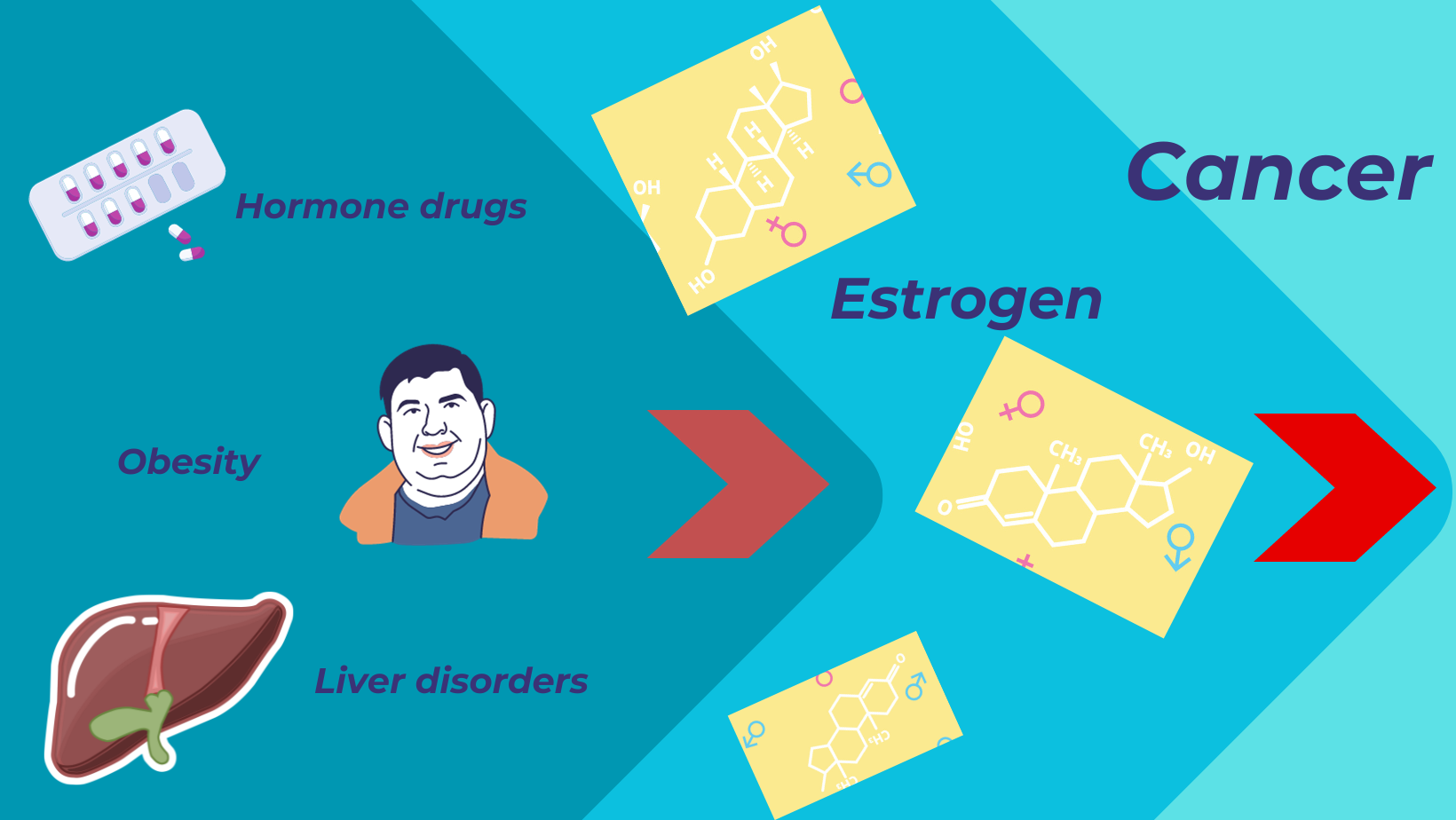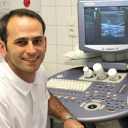
Do men really get breast cancer? The expert answer is yes, although it is rather rare. The problem is that such a tumor is considered a typically female disease. Therefore, in representatives of the other sex, the disease is often diagnosed relatively late, and this can affect the chances of cure. Therapy is generally based on the same guidelines that are currently used for breast carcinoma in women; yet, there are some specifics.
Male breast cancer prevalence
According to statistics, the ratio of men and women with breast malignancies is about 1:100, the former developing it on average ten years later.
The probability of developing this malignant condition is the highest at the age of 55 to 60 years and gradually decreases by the age of 80-85. However, some sources describe in both in children (a 6-year-old boy) and in deep old age (91).
What are the dangers of rare cancers?
The main trouble with rare malignant conditions, including breast cancer in men, is that in the initial stages of development they go unnoticed.
There are no standard preventive screening programs for the male population. As a result, the disease, unrecognized in time, discreetly progresses into a late stage, when palliative care is the only option.
Another problem: since the issue affects relatively few people, research in this area is not yet given much importance, and there are very few specialists who deal with this type of cancer.
How and why breast cancer develops in men
Really, where does it come from? How can it happen that men, who have a different anatomy and hormonal status, show the same clinical picture as women?
Before puberty, the mammary glands of boys and girls are virtually identical. Under the influence of female sex hormones, milk ducts, glandular tissue, connective and adipose tissue begin to grow only in girls. However, the milk ducts also exist in the opposite sex, and it is in them that 90% of cases of malignancy originate, since the cells of the ducts are particularly susceptible to this.
In most cases, breast cancer is dependent on the sex hormone estrogen, meaning it can only develop and grow if it is present. It is considered a female hormone, but is also part of the male endocrine system, although in a much smaller proportion. Estrogen is formed from hormonal precursors, such as the male sex hormone testosterone, by the enzyme aromatase. This process occurs mainly in adipose tissue, but female hormones are also produced in the testes. The causes of elevated estrogen levels in men can be either severe obesity or liver disease, or hormone medications, e.g. those used for sex reassignment.

Risk factors
In both sexes, the overall likelihood of getting breast cancer increases with age. Other risk factors are also the same. These include too much alcohol, lack of physical activity and overweight, as well as local radiation exposure.
Specific "male" risk factors are:
- undescended testicle (cryptorchidism);
- a history of inflammation of the testicles or testicular appendages (epididymitis);
- gynecomastia (abnormal enlargement of the mammary glands);
- Klinefelter syndrome (a genetic condition with one or more extra X chromosomes).
Other unfavorable genetic circumstances include mutations in the BRCA1, BRCA2 and CHEK2 genes.
Early and late symptoms: are there specific "male" characteristics?
The most important sign of a malignant breast tumor in men is a unilateral painless lump in the gland. It is usually located between the nipple and the armpit.
Another alarming signal is changes in the nipple, such as:
- clear or bloody discharge;
- retraction;
- small inflammations or non-healing wounds.
Enlarged lymph nodes in the axilla can also be considered a symptom: in about half of patients at the time of diagnosis, they are already affected by a malignant process.
However, not every change is indicative of a malignant process.
During life, completely natural and benign processes occur in the male mammary glands. Their bilateral enlargement in adolescents and the elderly is usually associated with hormonal restructuring. In other cases, obesity or alcohol abuse may be the cause.
Palpable masses are also not always malignant: cysts and benign growths of connective tissue can also occur in the male breast. Nevertheless, to avoid error, you should consult a doctor when they are detected, especially if they are accompanied by nipple changes.
At a late stage, malignancy may manifest itself with bone pain caused by skeletal metastases, weight loss, decreased performance, cough, shortness of breath, and jaundice or liver dysfunction. Metastases to lymph nodes in the axillae may result in swelling of the arm.
Which doctor should a man consult for a breast issue?
In a situation like that, a woman would know her way perfectly well – visit a gynecologist or a breast care provider. But representatives of the other sex can hardly imagine themselves in a "female" doctor waiting room. Other options do exist: depending on the situation, at the first stage, the issue may be dealt with by a general practitioner, a dermatologist or, for example, a surgeon.
Diagnostic procedures
If the breasts look or feel suspicious at palpation, evidence of cancer can be provided by imaging studies. According to European clinical guidelines, ultrasound examination of the gland tissue and the surrounding lymph nodes is to be the first step. Men, as well as women, also undergo mammography.
To do this, doctors take a tissue sample using a biopsy. Laboratory analysis of the obtained samples also includes a study of the biological features of the tumor tissue, which provides information in terms of choosing the right treatment option.
If there is suspicion of spread beyond the primary focus, additional tests are done. This is necessary to rule out metastases to lymph nodes, bones or other organs and to improve therapy planning. Computed tomography and bone scan are usually recommended for this purpose.
Unfortunately, malignancy is confirmed. What shall I do next?
A typically female cancer diagnosis takes many male patients by surprise, especially since it causes virtually no complaints at first, so most people feel healthy. Family and friends also often find it very difficult to cope. But it is necessary to try to overcome the initial shock and carefully consider further actions.
Step 1: Decide upon the timing
Once a malignant condition has been confirmed, it may take some time before treatment begins. It is needed to perform all the necessary additional tests and summarize their results. Sometimes not one, but a few specialists are involved.
The only exception is severe pain or other unbearable manifestations that require immediate action. In other cases, the patient has time to gather enough information and act in a planned rather than emergency manner.
Step 2: Find the right doctor
On the one hand, breast cancer in men is relatively rare. On the other hand, we can take it for sure that doctors know how to manage it since the treatment of this disease, although specific in certain aspects, is in general practically no different from the one used in women. In all cases, it is recommended to contact specialized health care facilities with acknowledged competence in the field of breast cancer care. The example of these in Germany are certified breast care centers.
They meet high quality standards, offer management options based on the most advanced medical knowledge, and are highly experienced in breast cancer therapy. All specialists involved in treatment work as a team, working out the best treatment strategies at tumor boards. It is the type of facilities most recommended in the case of malignant breast tumors in both sexes.
Step 3: Get a second opinion
Seeking one more point of view on your issue is not a sign of indecision or mistrust of your doctor. On the contrary, it indicates your conscientious attitude to decision-making, the prevalence of reason over emotion, the ability to make an unbiased analysis of the situation and draw the right conclusions. Fortunately, at the present time you do not have to travel halfway across the country or fly to another part of the world to obtain an alternative opinion on a rare disease. It is quite possible to get remote advice on the male variant of breast cancer, for instance, by using a breast care second opinion service.
Therapy guidelines
The disease can be caused by various genetic material changes in the glandular tissue cells. This means that such tumors differ significantly in their characteristics, such as growth rate, metastatic potential and response to certain drugs.
Accordingly, the therapeutic strategies may also differ. Description of available treatment options is only given to solely inform the reader; however, the choice in each case should be based on the attending physician recommendations and the patient's own decision.
Local therapy
Once a malignant mass in the breast has been detected, the primary therapeutic procedure in many cases is to remove it. The aim is to prevent the tumor from spreading throughout the body. If necessary, the affected lymph nodes are also removed.
In some situations, radiotherapy is also performed to prevent local recurrence.
Systemic therapy
Even if the screening exams did not find metastases, the carcinoma cells may have already spread throughout the body. In order to prevent their further proliferation and metastases growth in other organs, so-called adjuvant therapy is usually recommended. The goal is to cure the disease. Depending on the tumor features, the following options can be administerd:
- antihormonal therapy, which blocks the female sex hormone ability to affect the tumor;
- chemotherapy, appropriate for hormone-independent, locally advanced, or very aggressive tumors;
- antibody therapy, indicated for tumors extensively expressing growth receptors (HER 2).
Systemic treatments can also be neoadjuvant. In this case they reduce the volume of the mass and improve the surgery success chances, and thus the treatment outcome on the whole.
Follow-up care
After male breast cancer treatment has been completed, regular follow-up care is necessary. Its goals are:
- to recognize a recurrence in time;
- to minimize the consequences of the disease or the therapy performed;
- to ensure proper medical advice.
Basically, the follow-up procedure includes visits to the doctor with a physical examination and ultrasound scan to detect a local relapse in the breast and nearby lymph glands. You should see the doctor every three months for the first three years, every six months in the fourth and fifth years, and once a year at least in the following 10 years. A mammogram and/or ultrasound examof the other breast should also be done yearly.
Specific imaging and/or laboratory diagnostics (e.g. MRI, CT scan, tumor markers) for possible metastasis are not part of the routine follow-up for male breast cancer. It is only done if there are abnormalities (pain, cough, etc.). Studies conducted long ago showed that the survival rate is not affected by the detection of metastases even before their signs appear. But there is still no scientific data on whether or not a more intensive risk of metastases with high-tech techniques, especially in the presence of high-risk factors for recurrence, is justified. For example, the German clinical guidelines on breast carcinoma refer to the lack of knowledge of the situation:
This makes it even more important for the patient to communicate regularly with his doctor and to contact a specialist immediately at the first sign of the disease recurrence.
Are there gender-specific breast cancer treatment aspects?
Peter Jurmeister, chairman of the German non-profit male breast cancer association, notes:
Usually, drugs that have also proven effective in women, such as tamoxifen, which blocks estrogen receptors in the tumor, are used for this purpose. However, tamoxifen is a precursor drug, which after ingestion must be metabolized to the active substance in the liver. It has long been known that male and female liver metabolism differ. However, how these differences affect the optimal dosage or the occurrence of tamoxifen side effects in men is not yet well understood.
In women, antihormonal therapy often includes so-called aromatase inhibitors. The principle of action in this case is not to block receptors, but to suppress female hormones in the body. In men, these drugs also inhibit the conversion of testosterone and other hormone precursors into estrogens. However, about 20% of their estrogen is produced directly in the testicles. This cannot be affected by aromatase inhibitors. Therefore, the necessary hormone suppression can be achieved only with the simultaneous use of gonadotropin-releasing hormone analogs. These drugs turn off testicular function, which has a significant effect on physical performance, sexuality and psyche. The efficacy of such combination therapy in men has also not been proven in studies.
There is also a difference in approaches to surgical treatment. If for women the possible and desirable option is an organ-preserving procedure, mastectomy is number one treatment recommendation for men. They have far less breast tissue, therefore, removal of the whole gland, including the nipple, is usually unavoidable.
Final conclusions
A malignant tumor in the male breast is a very rare case, but the more dangerous it is for those with whom it did happen. The basic advice is that one should not ignore "typically female" complaints, and should not hesitate to contact doctors who usually deal with diseases associated with the other sex. The earlier the cancer is detected, the higher the chances of getting rid of it. It is a blessing that the existing diverse, effective and constantly improving methods of breast cancer treatment are practically universal for all genders.
REFERENCE LIST
- Anelli TF, Anelli A, Tran KN et al.: Tamoxifen administration is associated with a high rate of treatment limiting symptoms in male breast cancer patients. Cancer 74: 74–77, 1994. PMID:8004585
- Diagnose per Zufall. Ingrid Karb. Frankfurter Allgemeinen Zeitung vom 18.1.2017: http://www.faz.net/aktuell/rhein-main/brustkrebs-bei-maennern-ist-oft-diagnose-per-zufall-14608324-p2.html?printPagedArticle=true#pageIndex_2
- Campone M et al. Ribociclib plus letrozole in male patients with hormone receptor-positive, human epidermal growth factor receptor 2-negative advanced breast cancer: subgroup analysis of the phase IIIb CompLEEment-1 trial. Breast Cancer Research and Treatment 2022, 193:95-103
- Brustkrebs beim Mann. Das Interview mit Peter Jurmeister, Netzwerk Männer mit Brustkrebs. Dr. Katrin Mugele für die Deutsche Krebsgesellschaft. DKG Pressearchiv 2016.

Comments — 6
Oleg56
Влияют ли образ жизни, экологические факторы на возможность возникновения рака груди у мужчин?
Marina Virko
Здравствуйте. Спасибо за вопрос. Да, влияют. Научные исследования подтверждают, что среди заболевших большую долю составляют мужчины с избыточным весом и соответственно малоподвижным образом жизни, а также злоупотребляющие алкоголем. Также в группе риска пациенты, подвергшиеся избыточному локальному облучению. Из других существенных факторов риска следует упомянуть генетические мутации, среди прочего – наличие дополнительных Х-хромосом. Генетический фактор повышает риск заболеваемости в десятки раз. Поэтому пациенты, у которых в семье известны случаи рака груди, должны быть особенно внимательны даже при отсутствии явных симптомов, по возможности инициировать профилактическую диагностику.
Александр
я уже лечился в Виннице, но поехать сейчас нет возможности. Прошу подскажите название таблеток, Мне уже 85 лет и я пока в процессе лечения от инсульта )
Александр
Опухлость вокруг сосков, сначала левый позже и правый, я уже лечился ( лет 15 тому назад, но я уже забыл название таблеток )
Евгений
Скажите, а в каком возрасте у мужчин чаще всего можно опасаться рака груди у мужчин?
Marina Virko
Здравствуйте. Средний возраст заболевших в Германии составляет 71 год, так что в целом опасности подвержены пожилые мужчины.